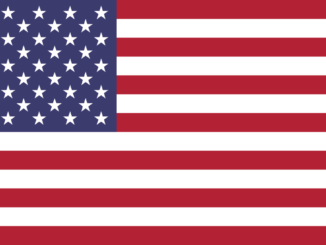 Most media outlets are content to describe CAIR, the Council on American-Islamic Relations, as a “civil rights organization” and leave it at that, but what do they do when someone quoted in a story inconveniently brings up the group’s connections to terrorism?
Most media outlets are content to describe CAIR, the Council on American-Islamic Relations, as a “civil rights organization” and leave it at that, but what do they do when someone quoted in a story inconveniently brings up the group’s connections to terrorism?
Two articles from 2019 caught our eye due to their starkly contrasting approaches.
An August 2 report in the New York Daily News offers a textbook example of playing defense for CAIR. Written by Chris Sommerfeldt, it focuses on a New York Young Republican Club event featuring an anti-Islam blogger. Readers are informed that CAIR’s local branch was urging the club to disinvite the speaker, who then blasted CAIR as “terror-tied” and “on the wrong side of the war on terrorism.”
Sommerfeldt’s next paragraph is an exercise in journalistic malpractice:
CAIR has long been accused by right-wing adherents of associating with terror-linked groups like Hamas. But the group denies any such ties and no charges were filed against it after the FBI investigated several Muslim advocacy organizations in the U.S. for allegedly providing material support to Hamas in the mid-2000s.
First, Hamas is not a “terror-linked” organization; it is a terror organization, designated as such by the U.S. government for more than two decades.
Second, Sommerfeldt frames CAIR’s ties to Hamas as the mere accusation of “right-wing adherents” — and thus worthy of dismissal — without mentioning the reputable figures who have scrutinized the data and reached the same conclusions.
Notably, in backing the decision of federal prosecutors to list CAIR as an unindicted co-conspirator in the Holy Land Foundation trial, a judge cited “ample evidence to establish the associations of CAIR … with Hamas” and ruled that “the four pieces of evidence the government relies on … do create at least a prima facie case as to CAIR’s involvement in a conspiracy to support Hamas.”
Third, the assurance that CAIR “denies any such ties” carries no weight given the information that Sommerfeldt keeps from his audience.
Fourth, while it is true that “no charges were filed against” CAIR — and there may be reasons for this that have nothing to do with any absence of criminality — it is separate from the matter at hand: CAIR’s well-documented connections to and support for Hamas.
* * *
Yet all is not lost in the mainstream media. An April 23 article in the Tulsa World takes a different path and demonstrates what good reporting on CAIR can look like.
The story is about a gun range that refused service to a CAIR-Oklahoma board member. According to the owners’ attorney, the man was rejected because of his “association with CAIR and CAIR’s association with terrorism.”
Journalist Anna Codutti then provides the necessary context:
CAIR is considered by the United Arab Emirates as a terrorist organization, but the U.S. government has not issued such a declaration. In 2008, the FBI ended contacts with CAIR because of concern about its continuing terrorist ties. In 2013, the U.S. Department of Justice issued a memo stating the FBI policy was not being followed consistently.
This paragraph is a brief but refreshingly accurate summary of governmental responses to CAIR’s terrorism problem. (Codutti’s article includes the link to the review of the FBI policy; we added the other two links above.)
In short, the Tulsa World clarifies; the Daily News obfuscates. One reporter does the work of a reporter; the other functions as a PR agent doing damage control.
* * *
Countering Islamism begins with understanding the organizations and individuals at the heart of the movement and disseminating relevant facts to the public.
For journalists who wish to contribute to this process and maintain credibility, following the lead of the Tulsa World is a good place to start. Those with little interest in either facts or credibility can settle for a job at the Daily News — assuming that CAIR itself is not hiring.


